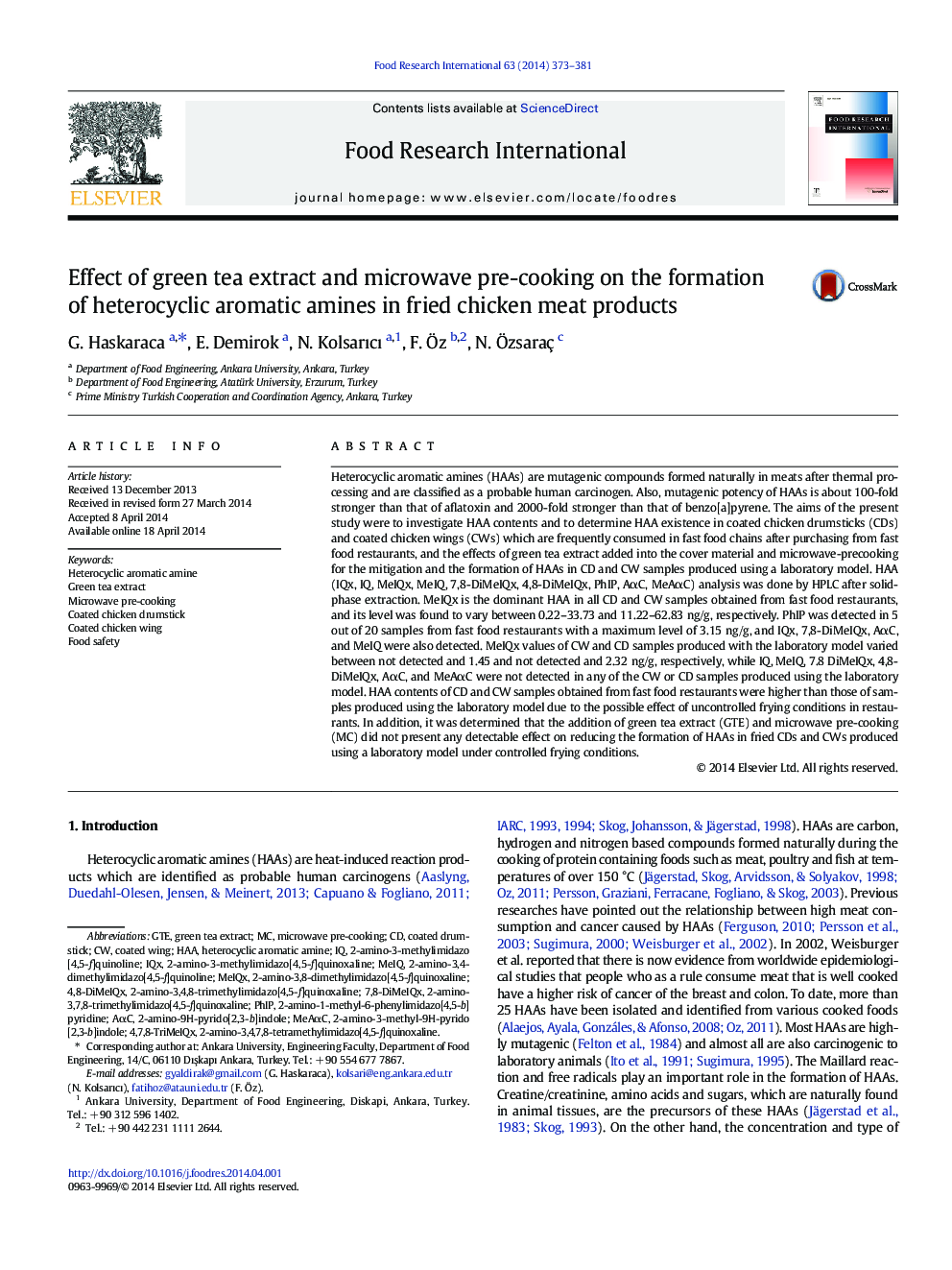| کد مقاله | کد نشریه | سال انتشار | مقاله انگلیسی | نسخه تمام متن |
|---|---|---|---|---|
| 4561620 | 1330663 | 2014 | 9 صفحه PDF | دانلود رایگان |
• HAA contents of CDs and CWs from fast food restaurants were found to be at high levels.
• MeIQx is the dominant HAA in CDs and CWs purchased from fast food restaurants.
• The effects of GTE on the formation of HAAs in CD and CW samples were not determined.
• MC treatment did not have any impact on reducing the formation of HAAs in CDs and CWs.
Heterocyclic aromatic amines (HAAs) are mutagenic compounds formed naturally in meats after thermal processing and are classified as a probable human carcinogen. Also, mutagenic potency of HAAs is about 100-fold stronger than that of aflatoxin and 2000-fold stronger than that of benzo[a]pyrene. The aims of the present study were to investigate HAA contents and to determine HAA existence in coated chicken drumsticks (CDs) and coated chicken wings (CWs) which are frequently consumed in fast food chains after purchasing from fast food restaurants, and the effects of green tea extract added into the cover material and microwave-precooking for the mitigation and the formation of HAAs in CD and CW samples produced using a laboratory model. HAA (IQx, IQ, MeIQx, MeIQ, 7,8-DiMeIQx, 4,8-DiMeIQx, PhIP, AαC, MeAαC) analysis was done by HPLC after solid-phase extraction. MeIQx is the dominant HAA in all CD and CW samples obtained from fast food restaurants, and its level was found to vary between 0.22–33.73 and 11.22–62.83 ng/g, respectively. PhIP was detected in 5 out of 20 samples from fast food restaurants with a maximum level of 3.15 ng/g, and IQx, 7,8-DiMeIQx, AαC, and MeIQ were also detected. MeIQx values of CW and CD samples produced with the laboratory model varied between not detected and 1.45 and not detected and 2.32 ng/g, respectively, while IQ, MeIQ, 7.8 DiMeIQx, 4,8-DiMeIQx, AαC, and MeAαC were not detected in any of the CW or CD samples produced using the laboratory model. HAA contents of CD and CW samples obtained from fast food restaurants were higher than those of samples produced using the laboratory model due to the possible effect of uncontrolled frying conditions in restaurants. In addition, it was determined that the addition of green tea extract (GTE) and microwave pre-cooking (MC) did not present any detectable effect on reducing the formation of HAAs in fried CDs and CWs produced using a laboratory model under controlled frying conditions.
Journal: Food Research International - Volume 63, Part C, September 2014, Pages 373–381
